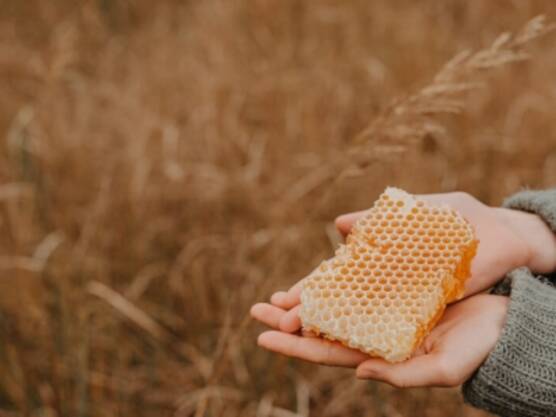- [email protected]
- Availability Location: Greece

The honeycomb is a "masterpiece of architecture" as its bee-making is a mechanical wonder. Part of the cell consists of hexagonal wax cells characterized by optimal construction specifications after centuries of mathematicians thinking that hexagonal partitions outperform any other shape or shape because they maximize available space with minimal use of building materials.
The wax produced by the wax glands of female bees is the key building material for making beehives to store their honey, pollen and offspring. The honeycomb with honey is a genuine and natural product with great beneficial properties and  is rich in proteins, vitamins, minerals, antibiotics as it also has strong immune activity. It has healing and anti-inflammatory properties and is contained in medicinal products such as suppositories, ointments for skin diseases and burns, and in many cosmetics. They can also lower high blood cholesterol levels, a risk factor for heart disease as well as honey antioxidants can help dilate the arteries that lead to the heart. It is worth noting that the beneficial properties of honeycomb are almost the same as propolis, since bees add tiny amounts of propolis to each honeycomb cell. Raw honey differs from commercial honey because it is not pasteurized or filtered. Apart from propolis, honey can also contain some bee pollen and royal jelly - bee additives with potential health benefits in small quantities. Honeycomb can also contribute to a healthier liver.
is rich in proteins, vitamins, minerals, antibiotics as it also has strong immune activity. It has healing and anti-inflammatory properties and is contained in medicinal products such as suppositories, ointments for skin diseases and burns, and in many cosmetics. They can also lower high blood cholesterol levels, a risk factor for heart disease as well as honey antioxidants can help dilate the arteries that lead to the heart. It is worth noting that the beneficial properties of honeycomb are almost the same as propolis, since bees add tiny amounts of propolis to each honeycomb cell. Raw honey differs from commercial honey because it is not pasteurized or filtered. Apart from propolis, honey can also contain some bee pollen and royal jelly - bee additives with potential health benefits in small quantities. Honeycomb can also contribute to a healthier liver.
Eating honey directly from the bee can pose some risks and in some cases eating large quantities of honeycomb can cause stomach problems. People with bee or pollen allergies should be careful with the honeycomb, as they may cause an allergic reaction. In addition, raw honey can be particularly harmful to pregnant women and children under 12 months of age.